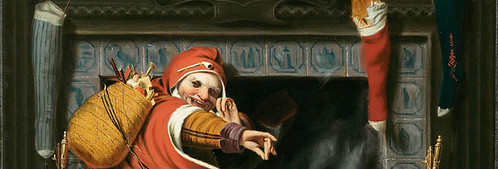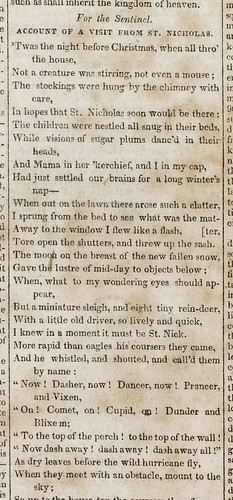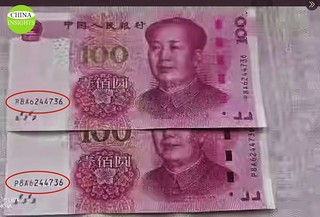
PREV ARTICLE
NEXT ARTICLE
FULL ISSUE
PREV FULL ISSUE
LOOSE CHANGE: DECEMBER 26, 2021Here are some additional items in the media this week that may be of interest. -Editor John and Nancy Wilson passed along this New-York Historical Society article about the New York City Origins of Santa Claus. Thanks. -Editor
Of course, some notion of Santa existed before the 19th century. Our Christmas elf is based on the real historical figure of St. Nicholas of Myra (or Bari), a man who died on December 6, 343 CE, in modern day Turkey. He was said to have performed many good deeds and miracles in his life. One good deed was secretly giving bags of gold to a family whose three daughters needed dowries to be saved from a life of poverty, and one miracle was a ghastly tale of Nicholas resurrecting three murdered children. Therein lie the origins of associating St. Nick with gift giving and kindness to kids. Today, Nicholas is revered in the Catholic faith as the patron saint—kind of like a protector—of sailors, merchants, archers, repentant thieves, children, brewers, pawnbrokers, and students. St. Nick is particularly celebrated in the Netherlands, where a holiday called Sinterklaas happens annually on December 5 or 6. Worldwide, many Catholics celebrate St. Nick's Feast Day on December 6—the day he died. The Dutch brought their devotion to St. Nicholas with them to the places they colonized, including New Amsterdam. New Yorkers of Dutch and other heritages grew up in the late 17th and early 18th centuries celebrating some form of Sinterklaas, or seeing others do so. Many revolutionary-minded New Yorkers developed an interest in Dutch culture because of a distaste for the British after the U.S. gained its independence.
To read the complete article, see:
Allen Schein passed along this article with the latest news on the Rust Rare Coin Ponzi scheme scandal. Thanks. -Editor The Utah man who prosecutors and investors have accused of running a $200 million silver trading scheme to fund charitable causes and lure more victims, pleaded guilty in federal court Monday. Gaylen D. Rust, 62, pleaded guilty to wire fraud, securities fraud and money laundering conspiracy. The plea agreement calls for prosecutors to recommend 19 years in prison. Rust and his family operated Rust Rare Coin. According to civil and criminal court documents, beginning in at least 2008, Rust induced investors to put money toward silver trading. “Their money was going to be used to buy physical silver that was going to be stored at the warehouse, explained Alan Rosca, an attorney representing some of Rust's investors. “And it turned out that none of that was true, Rosca said. "He was a fraud. It was all smoke and mirrors.
To read the complete article, see:
Chinese Banknote Printing Mischief?
"This has become a hot search online in mainland China. Chinese people are wondering: What mistake the printer of Renminbi has made? According to an overseas tweet, "The trillions of counterfeit bills in the Chinese market are authentic, printed by the China Banknote Printing Corporation. Everything is real, including serial numbers.“ "If the Chinese Banknote Printing and Minting Corporation had actually printed duplicate bills, I wonder if such news would scare the money printing clients? However, based on the CCP's habit of covering up real information, we don't expect to get a definitive answer to the question of whether there are duplicate authentic bills in China." Thanks. Kavan passed along a link to a YouTube video on the topic. If this happened it was an inside job, but is very reminiscent of the true story of The Man Who Stole Portugal - Alves Reis, a con man who forged documents and impersonated state officials to trick a banknote printing firm into printing a batch of real banknotes. -Editor
To watch the complete video, see:
For more information, see:
To read earlier E-Sylum articles, see:
Wayne Homren, Editor The Numismatic Bibliomania Society is a non-profit organization promoting numismatic literature. See our web site at coinbooks.org. To submit items for publication in The E-Sylum, write to the Editor at this address: whomren@gmail.com To subscribe go to: https://my.binhost.com/lists/listinfo/esylum All Rights Reserved. NBS Home Page Contact the NBS webmaster 
|


